
Julian was born into an artistically inclined family. His father Robert, a professional artist when he came to Texas from Maryland in 1879, married Emily WesleyRogers Gould in 1881 in San Antonio, and the couple made Texas their permanent home. The Onderdonks and the Goulds were distinguished families whose heritage included clergyman, statesmen, and educators, dating back to the whose heritage included clergyman, statesmen, and educators, dating back to the
seventeenth century. Julian, the first child, was born to Emily and Robert on July 30, 1882.Julian’s father was his first art teacher, but by the time Julian was eighteen years old he was anxious to study in the eastern United States. A friend and neighbor, G. Bedell Moore, lent him money to go to New York. In 1901 Julian enrolled in the Art Students League (his father’s alma mater), where his first instructor was Kenyon Cox.During the summer of 1901 Julian attended William Merritt Chase’s classes in Shinnecock, Southampton, Long Island. 
Julian went far beyond painting pictures “swiftly at one sitting,” but he never lost the profound respect for nature that Chase had instilled in him.
Exhausting his funds after the summer at Shinnecock and the following winter term at the Art Students League, Julian started painting to support himself. After he married Gertrude Shipman in June 1902, his formal art education came to a virtual halt. He did take a night course, however, conducted by Robert Henri. In 1906, Julian was offered a salaried position to assist in organizing art exhibitions for the Dallas State Fair, a function that his father had performed for many years. This job brought him back to Texas occasionally, and in 1909 he decided to return to San Antonio permanently. In 1906, Julian was offered a salaried position to assist in organizing art exhibitions for the Dallas State Fair, a function that his father had performed for many years. This job brought him back to Texas occasionally, and in 1909 he decided to return to San Antonio permanently. Upon his return Julian immediately began painting the Texas countryside. He and his father went on sketching jaunts together, and Julian, after so many years in New York, was back in his natural element. He diligentlyapplied the principles he had learned from Chase and painted directly from nature. Revealing his love for the Texas landscape, he wrote: San Antonio offers an inexhaustible field for the artist. Nowhere else are the atmospheric effects more varied and more beautiful. One never tires of watching them. Nowhere else is there such a wealth of color. In the spring, when the wild flowers are in bloom, it is riotous: every tint, every hue, every shade is present in the most lavish profusion, and even in the dead of summer, when one would imagine that any canvas could only convey the impression of intense heat, the possibilities of the landscape are still beyond comprehension. One has only to see it properly to find that everything glows with a wonderful golden tint which is the delight and the despair of all who have ever tried to paint it.
 Julian’s life became a routine of summers in New York assembling shows for the Dallas State Fair and the rest of the year painting in Texas. His work began to sell locally and as his reputation grew he also showed in galleries throughout the state and in other parts of the country. His last paintings, Dawn in the Hills and Autumn Tapestry, among his finest, were on the way to New York for the annual exhibition of the National Academy of Design for 1922 at the time of his death. Although regulations limited the exhibition to the work of living artists, Julian was accorded the unique honor of having his work accepted because of the unusual circumstances of his death as well as for the excellence of his paintings. Julian’s life became a routine of summers in New York assembling shows for the Dallas State Fair and the rest of the year painting in Texas. His work began to sell locally and as his reputation grew he also showed in galleries throughout the state and in other parts of the country. His last paintings, Dawn in the Hills and Autumn Tapestry, among his finest, were on the way to New York for the annual exhibition of the National Academy of Design for 1922 at the time of his death. Although regulations limited the exhibition to the work of living artists, Julian was accorded the unique honor of having his work accepted because of the unusual circumstances of his death as well as for the excellence of his paintings.
Julian’s death, in 1922, was as sudden and unexpected as many of his actions in life. He fell ill in San Antonio and failed to recover from an operation for an intestinal obstruction. His untimely death was doubtless hastened by a cavalier disregard for his own welfare. Since his early demise, Julian Onderdonk has become a legend. His work, represented in many public and private collections, is still avidly sought and has escalated enormously in value. Julian’s legacy lives on in his emotional, mysterious, and beautiful art. More about Julian can be learned from this book:  
|

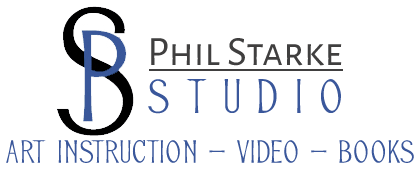

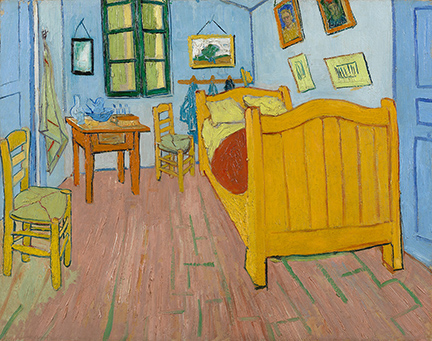
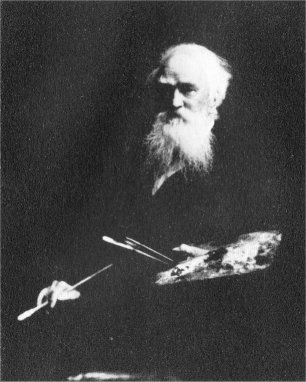







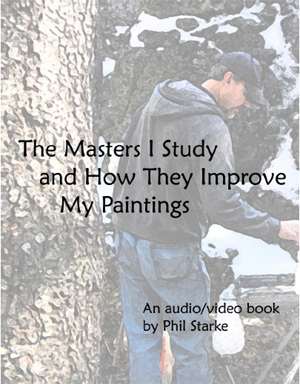

 whose heritage included clergyman, statesmen, and educators, dating back to the
whose heritage included clergyman, statesmen, and educators, dating back to the
 In 1906, Julian was offered a salaried position to assist in organizing art exhibitions for the Dallas State Fair, a function that his father had performed for many years. This job brought him back to Texas occasionally, and in 1909 he decided to return to San Antonio permanently.
In 1906, Julian was offered a salaried position to assist in organizing art exhibitions for the Dallas State Fair, a function that his father had performed for many years. This job brought him back to Texas occasionally, and in 1909 he decided to return to San Antonio permanently. Julian’s life became a routine of summers in New York assembling shows for the Dallas State Fair and the rest of the year painting in Texas. His work began to sell locally and as his reputation grew he also showed in galleries throughout the state and in other parts of the country. His last paintings, Dawn in the Hills and Autumn Tapestry, among his finest, were on the way to New York for the annual exhibition of the National Academy of Design for 1922 at the time of his death. Although regulations limited the exhibition to the work of living artists, Julian was accorded the unique honor of having his work accepted because of the unusual circumstances of his death as well as for the excellence of his paintings.
Julian’s life became a routine of summers in New York assembling shows for the Dallas State Fair and the rest of the year painting in Texas. His work began to sell locally and as his reputation grew he also showed in galleries throughout the state and in other parts of the country. His last paintings, Dawn in the Hills and Autumn Tapestry, among his finest, were on the way to New York for the annual exhibition of the National Academy of Design for 1922 at the time of his death. Although regulations limited the exhibition to the work of living artists, Julian was accorded the unique honor of having his work accepted because of the unusual circumstances of his death as well as for the excellence of his paintings.

 Marion was born in Milwaukee, Wisconsin, her mother was an artist and her grandfather was a member of the Royal Academy in London.
Marion was born in Milwaukee, Wisconsin, her mother was an artist and her grandfather was a member of the Royal Academy in London.





 Rungius was born in Germany in 1869 and attended the Berlin art Academy.
Rungius was born in Germany in 1869 and attended the Berlin art Academy. Zoo where he developed an interest in animals that drove him to research and study the mannerisms and habits of animals as well as a concern for anatomical accuracy.
Zoo where he developed an interest in animals that drove him to research and study the mannerisms and habits of animals as well as a concern for anatomical accuracy.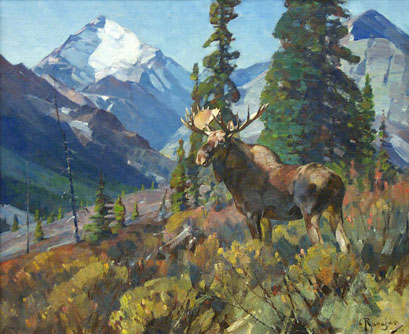 built a cabin and studio in the Canadian Rockies where he painted each summer until his death.
built a cabin and studio in the Canadian Rockies where he painted each summer until his death. drawings to create his larger canvases.
drawings to create his larger canvases.
